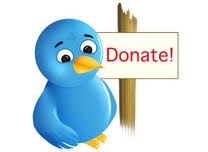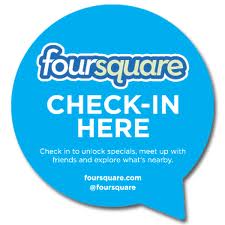 A few days ago, I was Skyping with Henry Freeman, the owner of H.Freeman Associates LLC. It was a getting-to-know-you session because a mutual friend had suggested that we needed to meet and explore possible ways for our two consulting practices to work more closely together from time-to-time. During our conversation, Henry asked me a question that I haven’t been able to get out of my head. That question was:
A few days ago, I was Skyping with Henry Freeman, the owner of H.Freeman Associates LLC. It was a getting-to-know-you session because a mutual friend had suggested that we needed to meet and explore possible ways for our two consulting practices to work more closely together from time-to-time. During our conversation, Henry asked me a question that I haven’t been able to get out of my head. That question was:
How do you network?
As one does in a fluid conversation, I had to think on my feet and these were the examples that came out of my mouth:
- Coffee meetings
- Breakfast, lunch and dinner meetings
- After-work cocktails
- Virtual networking (e.g. Facebook, Twitter, Pinterst, Google+, LinkedIn, and the DonorDreams blog)
- Group membership (e.g. Fox West Philanthropy Network)
- Conferences
I’m not sure if I’m any good at networking, but I do it primarily because I like people. I love meeting new people. If you are a regular reader of this blog, then you know that I regularly say things like “We don’t have to re-create the wheel” and “We can all learn from each other.” Both of these expressions are most likely drivers behind what gets me out of my home office and meeting with all sorts of people.
During a little windshield time yesterday, Henry’s question was still rattling around my brain when it dawned on me that “networking” is obviously a critical skill for most non-profit CEOs and fundraising professionals. If you’re good at networking, then you are probably a natural when it comes to:
- cultivating new prospective donors
- stewarding existing donors
- developing collaborations with other organizations, groups and corporations
- soliciting donors and selling sponsorships
- recruiting volunteers
- identifying and recruiting new prospective board members
- engaging existing board members
The more I think about it, networking skills sound more and more “foundational” as it generally related to SUCCESS.
As this idea continued rolling around in my thoughts, I couldn’t help but wonder what skills and traits are associated with people who are good networkers. Here is an incomplete list of things I managed to come up with:
- Sincere and genuine
- Conversational
- Interested
- Engaging
- Good listener
- Empathetic
- Living in the moment
- Intuitive
I’m not sure how accurate this list is, but they were all things that crossed my mind.
The final thought that crossed my mind on this topic was “How can someone get better at networking?” Not surprisingly, this question drove me to my favorite resource in the world — Google. 😉
After clicking around a little bit, I came across a link to Huffington Post simply titled “Networking Tips.” When I clicked it, there were two pages of HuffPo articles on a variety of networking subjects like “10 Simple Rules” and “8 Ways to Amp Up Your Personality.” It looked like a treasure trove of great reading.
Wanna see those links? Simply click here and enjoy!
Do you think that you’re good at networking? Why? What do you do to network? Which of your many skills and traits lend favorably to your ability to network?
If you end up like me and get thinking about this question, please scroll down to the comment box and share your thoughts and experiences. We can all learn from each other.
Here’s to your health!
Erik Anderson
Founder & President, The Healthy Non-Profit LLC
www.thehealthynonprofit.com
erik@thehealthynonprofit.com
http://twitter.com/#!/eanderson847
http://www.facebook.com/eanderson847
http://www.linkedin.com/in/erikanderson847









